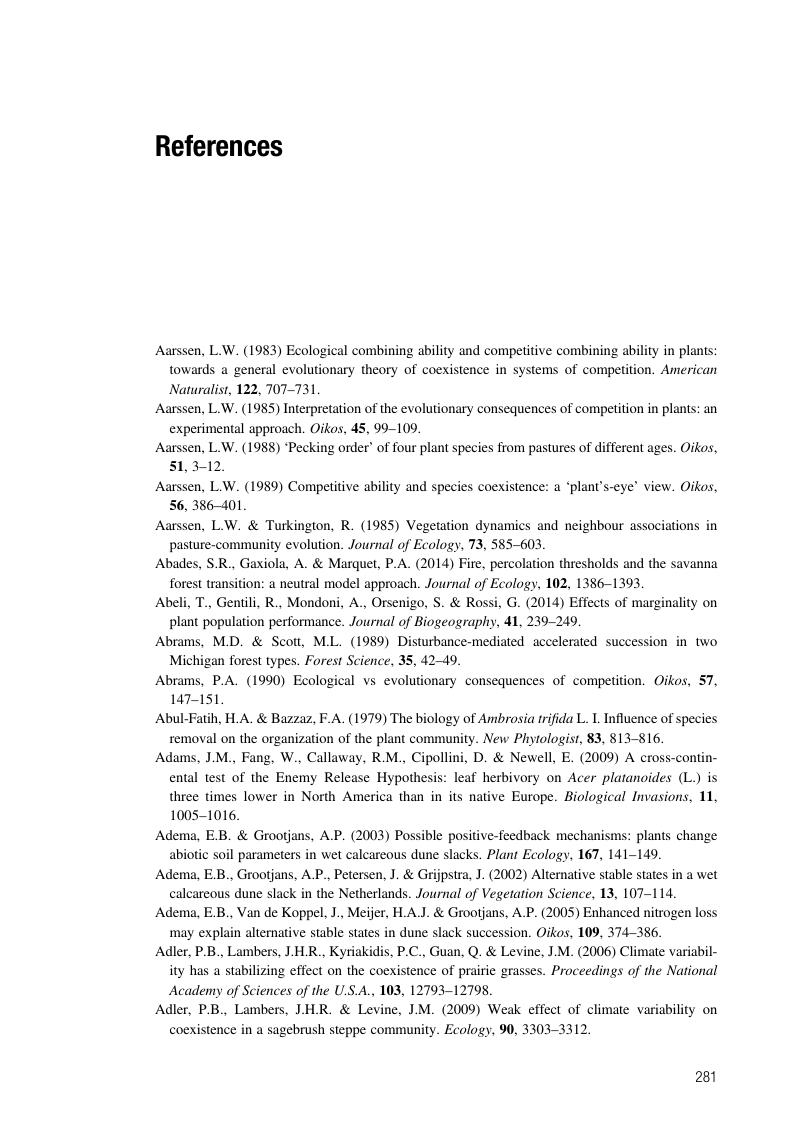Book contents
- The Nature of Plant Communities
- The Nature of Plant Communities
- Copyright page
- Dedication
- Contents
- Preface
- Glossary
- 1 Plants Are Strange and Wondrous Beings
- 2 Interactions between Species
- 3 Mechanisms of Coexistence
- 4 Community-Level Processes
- 5 Assembly Rules
- 6 Theories and Their Predictions
- 7 Synthesis
- References
- Subject Index
- Taxonomic Index
- References
References
Published online by Cambridge University Press: 29 March 2019
- The Nature of Plant Communities
- The Nature of Plant Communities
- Copyright page
- Dedication
- Contents
- Preface
- Glossary
- 1 Plants Are Strange and Wondrous Beings
- 2 Interactions between Species
- 3 Mechanisms of Coexistence
- 4 Community-Level Processes
- 5 Assembly Rules
- 6 Theories and Their Predictions
- 7 Synthesis
- References
- Subject Index
- Taxonomic Index
- References
Summary

- Type
- Chapter
- Information
- The Nature of Plant Communities , pp. 281 - 347Publisher: Cambridge University PressPrint publication year: 2019

